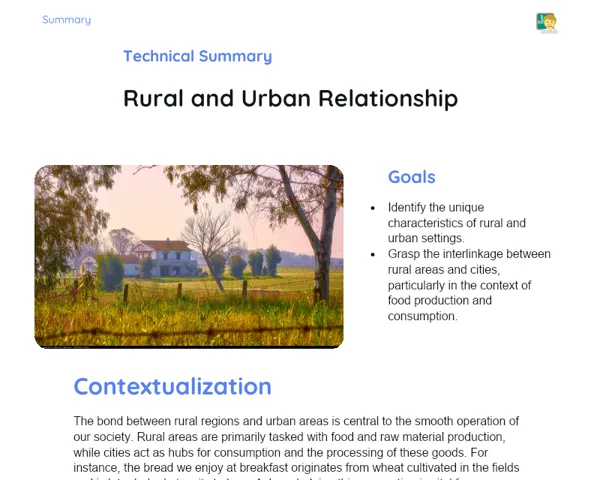Objectives
1. Identify and describe the main climate types around the world, including equatorial, tropical, subtropical, polar, and desert climates.
2. Understand the unique characteristics of each climate type, such as temperature patterns, rainfall, and types of vegetation.
Contextualization
Did you know that Antarctica is actually the largest desert in the world? While we usually think of deserts as hot and dry, a 'desert' is defined by the amount of rainfall it receives, not the temperature. With its vast icy expanses and minimal precipitation, Antarctica fits this definition perfectly. This highlights the amazing diversity and unexpected insights we can gain from studying climate around the globe—challenging our preconceptions and showing us the importance of geographical awareness.
Important Topics
Equatorial Climate
An equatorial climate features consistently high temperatures and humidity, with little variation throughout the year. Rainfall occurs frequently, supporting dense tropical forests. This climate is predominantly found along the Equator in areas like the Amazon rainforest and various Pacific Islands.
-
High temperatures throughout the year, with monthly averages above 18°C.
-
Regular rainfall all year round, which helps maintain lush vegetation.
-
Supports a diverse range of species due to stable temperatures and humidity.
Desert Climate
Desert climates are marked by very low rainfall, found in regions like the Sahara in Africa and the Atacama in South America. There is a stark temperature difference between day and night, with very high daytime temperatures and much cooler nights. Vegetation is sparse and specialized to survive with minimal water.
-
Low annual rainfall, usually under 250 mm.
-
Significant temperature fluctuations, with scorching days and chilly nights.
-
Flora adapted to dry conditions, including cacti and other succulents.
Polar Climate
Polar climates are found in places like the Arctic and Antarctica, characterized by extremely cold temperatures, long winters, and brief, cold summers. Rainfall is limited and usually falls as snow, with vegetation limited to cold-adapted species such as mosses and lichens.
-
Temperatures predominantly below freezing, with harsh winters and cool summers.
-
Minimal precipitation, most of which exists as ice.
-
Vegetation is restricted to cold-hardy plants due to short growing seasons.
Key Terms
-
Equator: An imaginary line that divides the Earth into two halves, where equatorial climates are prevalent.
-
Temperature Range: The difference between the highest and lowest temperatures recorded over a period, like a day or year.
-
Biodiversity: The variety of living organisms, particularly flourishing in equatorial climates because of favourable conditions.
For Reflection
-
How does the equatorial climate contribute to the rich biodiversity in those regions?
-
In what ways can the adaptation of plants in desert climates inform scientific advancements in developing drought-resistant crops?
-
What are the implications of global climate change on polar environments and their inhabitants?
Important Conclusions
-
We delved into the fascinating features of various climate types around the globe, such as equatorial, desert, and polar climates, and how each influences life and ecosystems in their respective areas.
-
We observed how the equatorial climate, with its warm temperatures and high humidity, fosters abundant biodiversity, whereas the desert climate imposes significant survival challenges due to its low rainfall and drastic temperature shifts.
-
We acknowledged the significance of understanding climate types, not merely as geographical details, but as vital factors affecting human activities, urban development, agriculture, and sustainability.
To Exercise Knowledge
Create a climate diary for one week. Note down the temperature and general weather conditions in your local area. At the week's end, compare your recorded data with the characteristics of one climate type you studied (equatorial, desert, or polar) and discuss what life would be like in such a climate.
Challenge
Explorer's Challenge: Select one of the climate types you've studied and research a region of the world that embodies it. Produce a short video or digital presentation showcasing the characteristics and challenges faced by the local community and the region's flora and fauna. Be creative—feel free to include images, graphs, or even interviews if you can!
Study Tips
-
Utilize online interactive maps to explore various regions and their climates. This visualization can help clarify the geographical distribution of climate types and their local influences.
-
Watch documentaries or read articles focusing on areas with the climates studied. This not only reinforces your learning but also offers new insights into how people adapt to these challenging environments.
-
Practice summarising or creating infographics on each climate type. This promotes not only retention but also hones your ability to synthesize and organize information.

